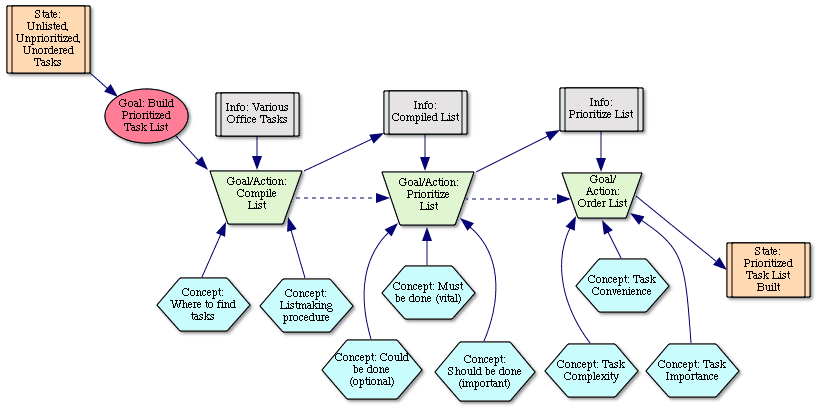LCDR Edward Beale ~ SDSU Coursework
EDTEC 671: Learning Environment Design
Outcome Statements
Download: (67kb, 1 page Word Doc)
Topic of lesson: Gathering, Prioritizing and Ordering your daily activities
Name: Edward K. Beale
Outcome statements
Main Objective: The student will be able to build a prioritized daily task list.
Sub Tasks
- Given a simulated office environment, the learner will gather tasks from possible sources (apply concept) and compile them into a list (apply process).
- Given a properly compiled list of daily activities, the learner will prioritize them by marking each with an A, B, or C priority (apply principle).
- Given several tasks, the learner will discriminate between those that MUST be done today and those that either SHOULD or COULD be done (apply concept), and label them as priority level A (apply procedure).
- Given several tasks, the learner will discriminate between those that SHOULD be done today and those that either MUST or COULD be done (apply concept), and label them as priority level B (apply procedure).
- Given several tasks, the learner will discriminate between those that COULD be done today and those that either MUST or SHOULD be done (apply concept), and label them as priority level C (apply procedure).
- Given a properly prioritized list of daily activities, the learner will order them by marking each item with a sequential number (apply principle).
- Given a series of priority A tasks, the learner will order them (apply procedure) based on CONVENIENCE (apply concept).
- Given a series of priority B tasks, the learner will order them (apply procedure) based on IMPORTANCE (apply concept).
- Given a series of priority C tasks, the learner will order them (apply procedure) based on COMPLEXITY (apply concept).
Concept Map
Figure 1 illustrates the Concept Map for this lesson (click for larger version).
Figure 1
Updated:
3/19/07
